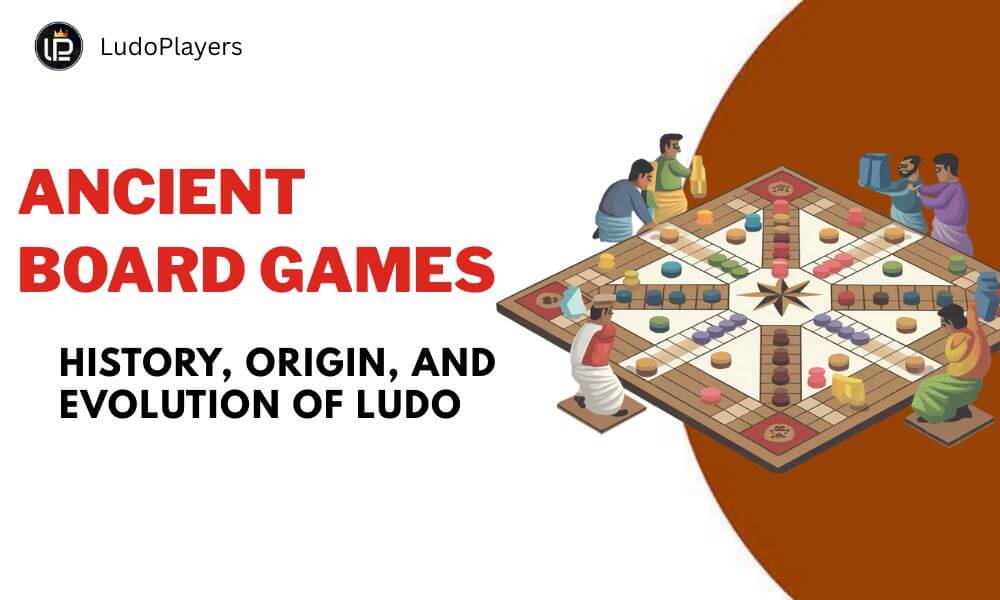Even in the world of modernisation, playing ancient board games has always been fascinating. One such game, Ludo, holds immense popularity. It has captured the eyes of many during the recent pandemic, but it will not be right to say that Ludo originated just a few years ago. It is believed that ancient board games like Ludo in India have been around for centuries.
As per the information available on the internet, Ludo gameplay originated in the 6th century CE. The Indian board game is one of the most fantastic games to have some sort of fun with your friends and family. People call it one of the most interesting games of all time. Ludo gameplay accommodates 4 players in the gameplay offering extreme fun while playing.
Here, the most important question about Ludo’s history is where Ludo originated and how this ancient board game came into our imagination. The answer to the question is “India”. Yes, India has invented Ludo, as the roots of Ludo gameplay are also found in ancient India. Chausar or Chaupar is currently from where it was played first. As the years passed, this traditional game became popular throughout the world, and now we are playing it as Ludo.
Delving into the article, you will get to know more about the history and origin. So, if you are interested in knowing about the history of the game you are playing, make sure to hover over the detailed article.
History of Ancient Board Game(Ludo)
When do you hear the name Ludo, I assume most probably after the popularity it gained during the COVID-19 pandemic? However, this is a legendary game associated with the time of the Mahabharata. The interesting thing is that it is a game of strategy from ancient times that can be used in daily life.
Probably, the Ludo gameplay is an Indian creation, as the earliest proof can be witnessed during the time of the Mahabharata and the Mughal emperors. Ludo gameplay evolved from the game of Pachisi in India during the 6th century. The historic era proved the existence of ludo in India. Furthermore, it is also believed that Shakuni used to curse their dice to beat the Pandavas and lose everything they achieved in their lifetime.
Over the period, the game also holds the name of Chaupar, the contemporary version of Pachisi. This popular game in India was made to test strategy and skills. It is also believed that different board game relevant to Ludo was also played in India for centuries.
The magical thing is that even nowadays, Ludo gameplay holds immense excitement, and this board game has evolved from becoming a royal game, attracting an audience worldwide. Later, by the British royal in England, the ludo board was converted to a cubic dice with a dice cup and coined.
Who and When Ludo Board Game Patented?
As per the resources available on the internet, the Ludo game was patented by Alfred Collier in England in 1896. The rules can be more or less like the ancient ludo, but only the rectangular dice are replaced with a cubic one. Alfred Collier’s total contribution in perfecting and streamlining this traditional game into a more exciting and uniform structure.
Even though the game has its roots in ancient India, he worked very hard to develop a new board game that would be fun for Ludo players of all ages and worldwide. The modern version of Ludo is appreciated in today’s world.
Variations of Ludo in Ancient India

Chausar(Ludo) in Mahabharata
It is stated that Ludo has been mentioned for the first time as a Chausar in the Indian epic Mahabharata. The game was invented after the Kauravas’ invitation to the Pandavas for a game of dice. At that time, Ludo’s invention took place with a simple token and dice used to play the game, representing strategy, greed, and fate.
Chaupar(Ludo) in Hindu Mythology
Games like Ludo evolved as a metaphor for life’s unpredictable nature and fate in Hindu mythology. At that time, the Chaupar game was represented by the divine game loved by both kings and gods. It establishes a harmony between strategy and chance, determining the uncertainties of life. Later, the board game’s evolution becomes philosophical beyond entertainment, just because of the spiritual implications.
Pachisi(Ludo) in Fatehpur Sikri
During the Mughal rule, the game went through various advancements. It highlights the additional development by Emperor Akbar, who remanded the game and called it Pachisi. He constructed a Pachisi board in his court at Fatehpur Sikri. As the game grew in association with Mughal culture, its impact spread beyond India, influencing the variation of Ludo we play today.
The internet resource claims that the modern Ludo game is a condensed form of Pachisi, originating from an ancient Indian game. Ancient India performed Pachisi in the 6th century, which is renowned by Alfred Collier and called Ludo. Thanks to his approachable design and his 1896 patent, which made Ludo a popular game of all time.
Explore the Digital Transformation of Ludo

With the growing technology and advancement in the gaming sector, Ludo’s adaptation undergoes from a physical board to an online board, which can be easily accessed by a digital device with an internet connection. It opens an exciting opportunity for a worldwide audience to join Ludo and have fun with their friends and family. Let’s know some potential traits about Ludo in this digital evolution.
- Online Multiplayer Mode: The creators understood the importance of social components, taking the game to the peak of popularity. That’s why Ludo has enabled multiplayer modes to play against your opponents and friends sitting across the globe. Unlike the ancient board games, now you can easily connect and play Ludo with people worldwide.
- Compatibility: The easy availability of the Ludo game on various devices such as computers, tablets, and smartphones has enabled users to gain a smooth gaming experience and play Ludo around the world.
- Enhanced Graphics and Interface: The gaming interface and graphics are an important element of the Ludo game to engage users in long-term play. Thanks to the game designers who have embedded lively graphics and intuitive interfaces in digital transformation.
In addition to this, the modern Ludo game continues to bring popular features to enhance the classic charm of Ludo. As of now, Ludo is still a popular development for connecting and having fun with your family.
Overview of Ludo Gameplay

The Ludo gameplay starts with 4 players and rolling a dice by any of the players, and moves only one piece. The tokens move respectively to the number displayed on the dice and then further move forward around the board. Another turn goes to the next player, and they perform the same activity.
A player can’t draw a token from home until and unless they earn six or an additional bonus in that turn. If a player rolls six again, the player can make an extra roll, but if the third also comes up with a six, the turn immediately passes to the next player.
If any of the 4 players meet another player’s token in the same box, it resets the opponent tokens back to their home and starts over. No players can enter any player’s specific home column. A player must enter their specific home column after a rotation to get each piece into the home. The player who successfully takes all of their tokens to the home column is the winner of the game.
Conclusion
The historical game, Ludo, is one of the most fantastic and entertaining games of all time, categorised under the ancient board games. You can easily connect with your family or friends anywhere in the world and have fun with them. It is an Indian game that evolved over centuries during the times of the Mahabharata. Later, it was patented and customised in various countries. Thanks to the digital transformation, which made the digital version of Ludo by adding new game modes and themes to catch users’ attention. The gameplay requires Ludo tips and tricks to surprise your opponents and be a winner of the game.


Leave a Reply